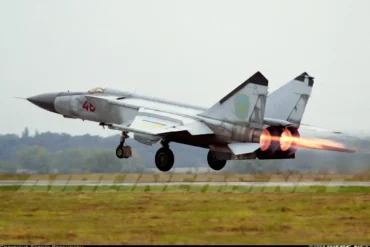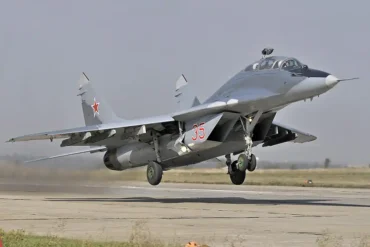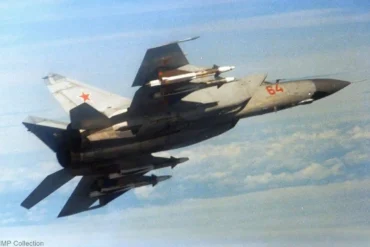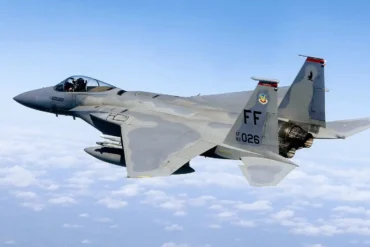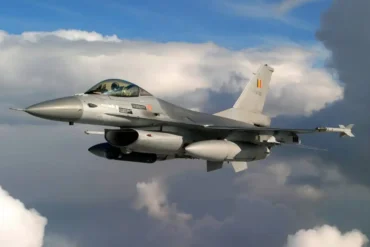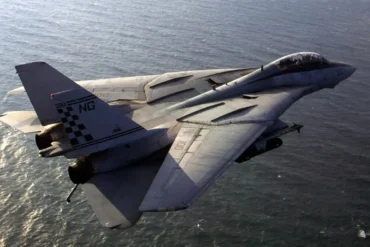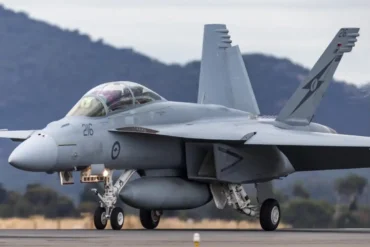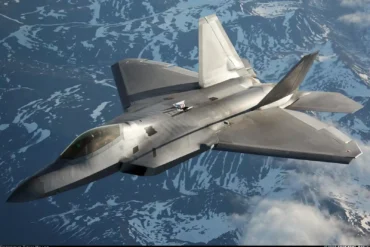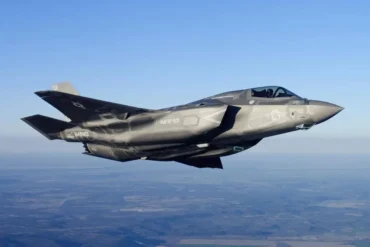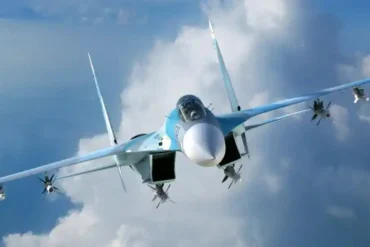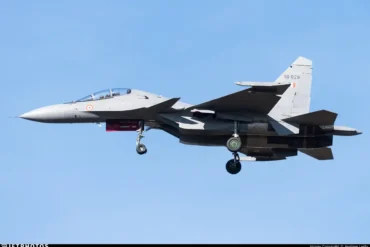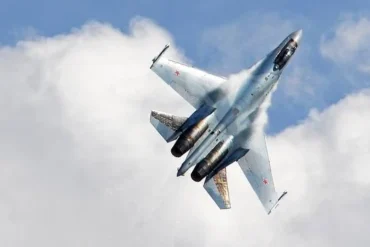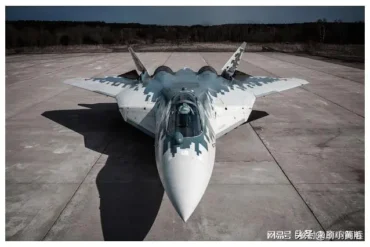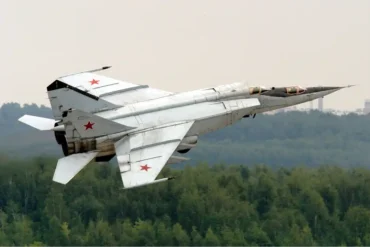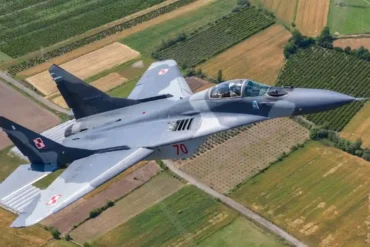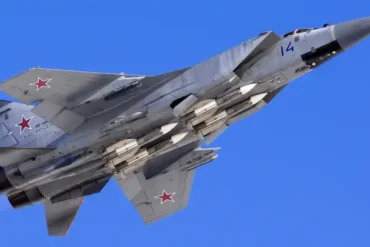The MiG-31 is a remarkable aircraft that has carved a unique niche in aviation history. Designed by the Soviet Union during the Cold War, it remains one of the most formidable combat jets ever built. With its awe-inspiring speed, unique weaponry, and incredible operational capabilities, the MiG-31 is a true testament to Soviet engineering. Below, we explore some fascinating and lesser-known facts about the MiG-31, showcasing why this aircraft is a legend in the skies.
The MiG-31: A Flying SAM Site
The MiG-31 has earned the nickname “flying SAM site” due to its role as a mobile air defense unit. Unlike typical fighter jets, the MiG-31 was designed to act as an airborne surface-to-air missile (SAM) platform, offering both offensive and defensive capabilities. Its primary weapon system, the R-37 missile, is capable of targeting enemy aircraft up to 300 km away, making it one of the longest-range air-to-air missiles ever produced.
This advanced missile, combined with the powerful NIIPN007S-800 radar, which boasts a detection range of up to 200 km, makes the MiG-31 a formidable opponent. The radar was the world’s first operational Passive Electronically Scanned Array (PESA) radar, a technology that remained unrivaled until the F-22 Raptor was introduced in 2000. The MiG-31 can track up to 10 targets and engage 4 of them simultaneously, which allows it to function as a mini-airborne command post.
Stainless Steel Heritage
The MiG-31’s design has deep roots in the MiG-25, a famous Soviet aircraft known for its blistering speed. While the MiG-25 used stainless steel in its construction to survive high-speed heat during flight, the MiG-31 introduced more advanced materials. However, much like its predecessor, the MiG-31 prioritized function over form, with its rugged design focused on survivability and effectiveness rather than sleek aesthetics.
This “Soviet engineering” approach allowed the MiG-31 to withstand the harshest conditions and extreme operational demands. The aircraft’s durability and robust structure have ensured it remains in service long after many other jets of its era have been retired.
Size and Speed Dominance
The MiG-31 is a giant among combat jets. With a length of 22.6 meters and a maximum takeoff weight of 46.2 tons, it dwarfs many modern fighters like the Su-27 and the F-22 Raptor. Despite its large size, the MiG-31 is incredibly fast and agile.
It holds the title for the fastest operational combat aircraft, capable of reaching speeds of Mach 2.83 (approximately 3,450 km/h) and cruising at Mach 2.35 without afterburners. This exceptional speed allows the MiG-31 to cover vast distances quickly, making it a powerful tool for intercepting enemy bombers and missiles.
Operating at high altitudes, the MiG-31 can reach 24,000 meters, giving it an advantage in missile engagements. This high altitude also helps its weapons gain extra kinetic energy, increasing their range and effectiveness.
Arctic Guardian: A Vital Defender in the Far North
The MiG-31’s strategic role has been particularly significant in Russia’s Arctic and Far East regions. It was specifically designed to operate in harsh conditions, including extreme cold and rough terrain, making it indispensable for defending Russia’s vast northern borders.
The MiG-31BM variant is capable of launching the Kh-47M2 “Kinzhal” hypersonic missile, which travels at a speed of 10 Mach and has a range of 2,000 km. The MiG-31BM can launch this missile from bases in the Russian Far East, threatening U.S. military installations such as Elmendorf Air Force Base in Alaska, located approximately 1,680 km away. The aircraft’s ability to operate from short, icy, and rough runways in extreme temperatures gives it a significant advantage in these regions, where other aircraft would struggle.
Missile Supremacy: The R-37M and Kinzhal
One of the MiG-31’s standout features is its missile armament. The R-37M, a next-generation air-to-air missile, is capable of striking targets as far as 400 km away, making it twice as powerful as the U.S. AIM-120D missile. This missile is designed to take down enemy aircraft well beyond visual range, a capability that gives the MiG-31 unmatched air superiority.
The MiG-31 also holds a critical advantage with the Kinzhal hypersonic missile, which is capable of reaching speeds up to 10 Mach. With a range of 2,000 km, the Kinzhal turns the MiG-31 into a lethal strike platform. This capability sets the MiG-31 apart from Western fighters, such as the F-22, which lack a comparable hypersonic strike ability. The MiG-31 is the only fighter jet in the world capable of launching such long-range, high-speed missiles.
Cost-Effective Power
Despite its size and technological advancements, the MiG-31 is a cost-effective solution for Russia’s defense needs. Compared to the U.S. F-22, the MiG-31 is cheaper to operate, making it an ideal choice for the vast and diverse geographical conditions of Russia. Its rugged design and lower maintenance requirements allow it to be stationed in remote, austere locations, such as those found in the Arctic, where other more advanced aircraft might be grounded by harsh conditions.
This cost-effectiveness, combined with its exceptional operational capabilities, ensures that the MiG-31 continues to be a crucial asset for the Russian Air and Space Force (VKS).
Unique Crew Setup: Pilot and Radar Operator
One of the most unique aspects of the MiG-31 is its two-seater configuration. The aircraft features a pilot and a dedicated radar operator who manages the aircraft’s advanced systems. This division of labor allows the pilot to focus on high-speed maneuvers and combat tactics while the radar operator handles the complex radar and missile targeting systems.
This dual-crew setup is particularly valuable when coordinating with other aircraft or ground-based units during missions, as the radar operator can focus solely on tracking targets and guiding weapons systems, leaving the pilot free to concentrate on evasion and offensive tactics.
Limited Operators and Continued Service
The MiG-31 is a rare aircraft, with only Russia and Kazakhstan operating the jet. Its specialized role, high operational costs, and unique technological requirements have limited its export potential. As a result, the MiG-31 has remained a crucial part of Russia’s air defense strategy, with production officially ending in 1994.
Despite this, the MiG-31 has undergone several upgrades over the years, including the introduction of the MiG-31BM and MiG-31K variants, which have modernized the aircraft’s avionics, radar, and missile systems. These upgrades ensure that the MiG-31 remains a powerful and effective asset in the Russian military arsenal.
Record-Breaking Endurance: A Long-Distance Interceptor
The MiG-31’s operational range is nothing short of impressive. In one notable instance, a modified MiG-31BM flew for 7 hours and 4 minutes, covering a distance of 8,000 km with the help of aerial refueling. This endurance demonstrates the MiG-31’s long-range interception capabilities, making it an ideal choice for intercepting high-value targets in distant airspaces.
Pop Culture Recognition: The MiG-31 in Ace Combat 7
The MiG-31 has made its way into popular culture, particularly through its appearance in the video game Ace Combat 7: Skies Unknown. In the game, the MiG-31 is known as the “Foxhound,” celebrated for its speed, firepower, and role as an elite interceptor. Its portrayal in the game highlights the MiG-31’s legacy as one of the most iconic and formidable fighter jets in the world.
Stellar Performance at Extreme Altitudes
The MiG-31 holds numerous records for its performance at extreme altitudes. During a test flight in 1977, the MiG-31 set a record by reaching a height of 37,650 meters (123,000 feet), an achievement that remains unmatched by most fighter jets to this day. The MiG-31 can also climb to 35,000 meters in just 4 minutes and 11 seconds, setting a benchmark for supersonic performance that still stands.
A Cold War Hero: The MiG-31’s Role in Tense Air Encounters
During the Cold War, the MiG-31 found itself at the center of several high-stakes confrontations. One of the most dramatic instances occurred in 1983, when the Korean Air Lines Flight 007 accidentally strayed into Soviet airspace, triggering a tense standoff between Soviet and American forces. A MiG-31 was scrambled to intercept the U.S. Air Force F-15 and E-3 AWACS (Airborne Warning and Control System) aircraft that were monitoring the incident.
This close encounter, which nearly escalated into open conflict, demonstrated the MiG-31’s strategic importance as a rapid-response interceptor in the tense airspace along the Soviet Union’s borders. Its 36mm thick cockpit glass provided the pilot with unparalleled protection against the harsh environmental conditions encountered during high-speed, high-altitude intercepts, while also allowing it to withstand extreme pressure changes and temperature differentials.
The MiG-31’s role in this high-profile incident highlights its crucial position in the Cold War’s aerial defense network and its ongoing presence as a strategic asset. Its ability to react quickly to aerial threats, even under the most tense and challenging circumstances, remains one of the aircraft’s defining traits.
Conclusion
The MiG-31 is much more than just a fighter jet; it is a symbol of Soviet ingenuity and strategic thinking. From its groundbreaking radar and missile systems to its unmatched speed and endurance, the MiG-31 has cemented its place as one of the most exceptional combat aircraft in aviation history. Whether intercepting hostile bombers at high altitudes or launching hypersonic strikes, the MiG-31 remains a formidable presence in the skies.
With its unique blend of speed, firepower, and endurance, the MiG-31 is not just a relic of the Cold War but an essential part of modern air defense. It continues to serve as a critical component of Russia’s military strategy, ensuring that it remains a potent force in the skies for years to come.

